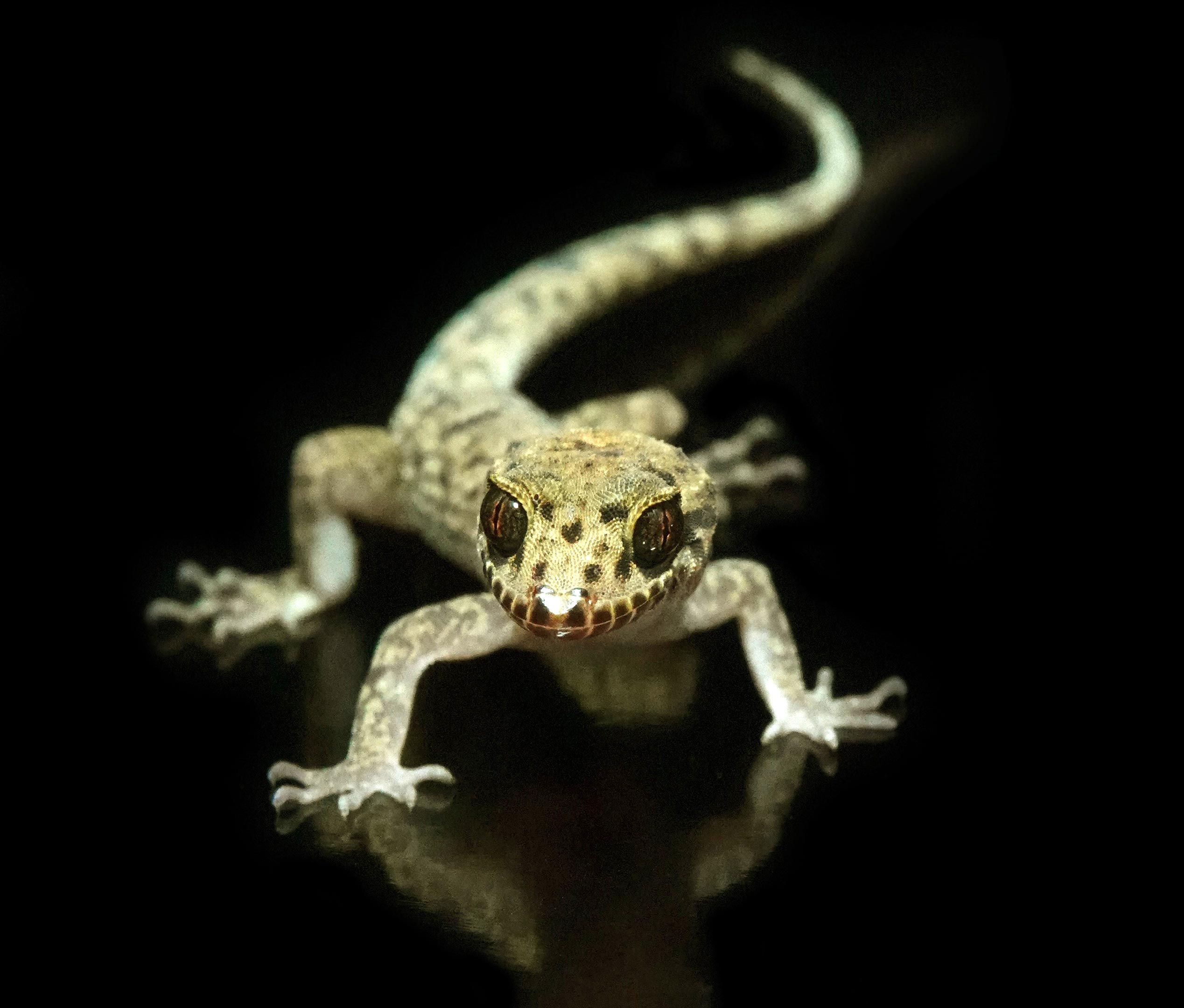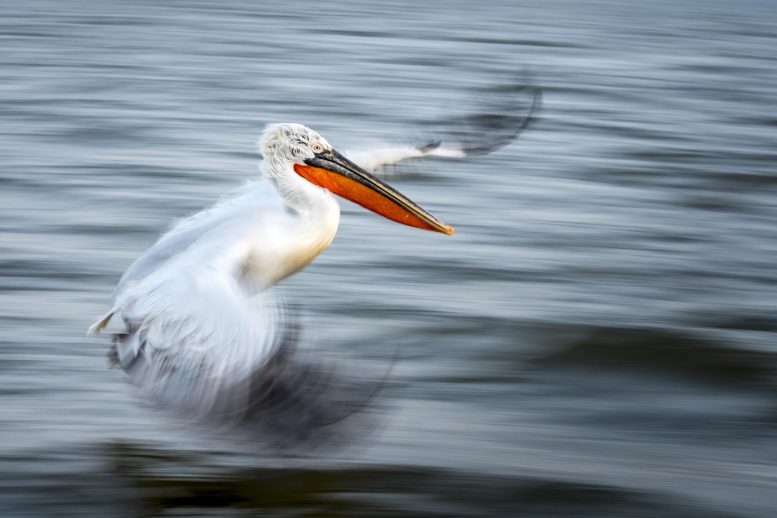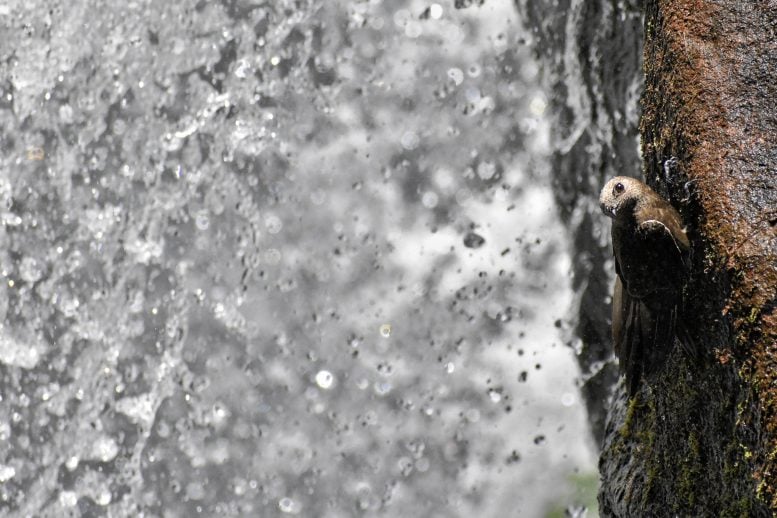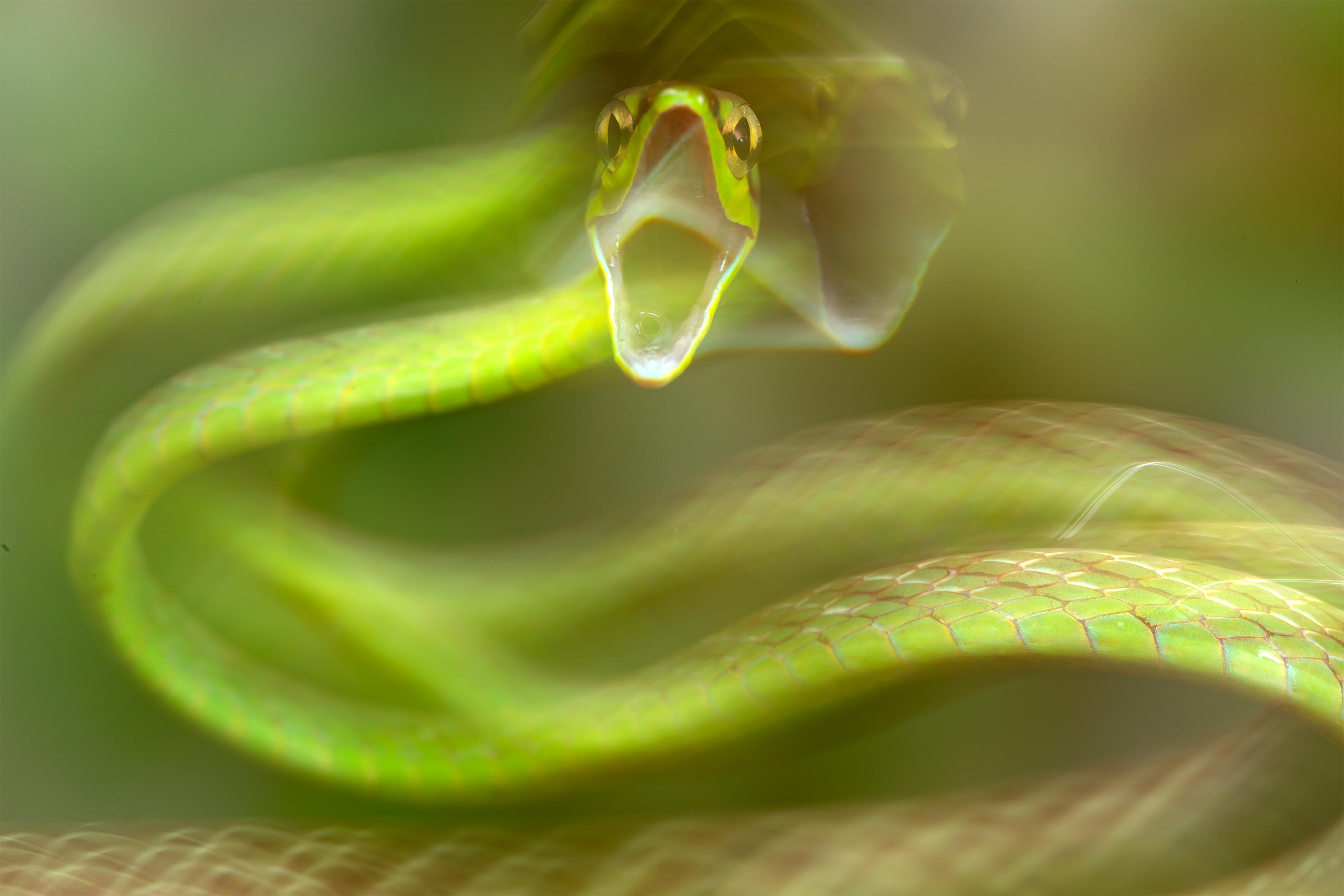
[ad_1]

Overall winner: The art of flight. A panoramic shot of a flying Dalmatian pelican (Pelecanus crispus). An internationally endangered species of bird. The image has been slightly post-processed with tonal alterations, dodging and burns, saturation changes, sharpening, and noise reduction. Credit: Alwin Hardenbol / British Ecological Society
An image of a flying Dalmatian pelican, taken by Alwin Hardenbol, has been awarded the winner of the British Ecological Society’s annual photography competition, “Capturing Ecology”.
The winning images and 16 other highly recommended images, taken by environmentalists and international students, celebrate the diversity of ecology; capture flora and fauna from all over the planet. Topics range from a confrontation between a roadrunner and a rattlesnake, flamingos feasting at sunset and a close-up of a friendly wrasse.
On her winning image, Alwin, a doctoral student at the University of Eastern Finland, said: “I gave this image the title The Art of Flight due to the impressive print of this bird’s wings in the photo, you can almost see the bird flying in in front of you although it is a still image.
“I used a technique called panning which involves using a slow shutter speed and moving the camera with the bird as it flies. In a perfect scenario, the background and most of the bird will show blurry movement but the head should be in focus. I took thousands of photos and although most failed I was very happy with this photo.
“Winning such a competition as an ecologist gives me the opportunity to continue to combine my research with my passion for nature photography.”
Professor Jane Memmott, President of the British Ecological Society, commented: “The photograph perfectly captures the movement, grace and beauty of the bird. Pelicans were one of my favorite birds to observe on trips to the ocean when I was working in Costa Rica as a doctoral student and this image reminds me of that time. A difficult photograph to take and a deserving winner.
“As always, the quality of the photography is impressive, and it was a fun job going through them all. I congratulate all the winners and thank all participants for their contributions. “
Alwin also won the “ People and Nature ” category with an image of a black-legged kittiwake, an internationally vulnerable species, nesting in a decrepit building in Varanger, Norway.

Overall Student Winner: Waterfall Swift. Like most species of Swift, the Greater Dusky Swift (Cypseloides senex) can be found perched in vertical cliffs. But, this particular species pushes its habitat to the extreme and, being known in Latin America literally as the ‘rapid waterfall’, the great Dusky Swifts are found in the steep rock faces up to 80 meters high around the falls. of Iguazú, frequently flying through the waterfalls offering a unique spectacle. Credit: Pablo Javier Merlo / British Ecological Society
The winning student is Pablo Javier Merlo, who is studying biology at the National University of Córdoba, Argentina. Pablo’s image captures a large, dark swift perched on the steep rock faces of Iguazu Falls in Argentina. These birds, known as “waterfall swifts” in Latin America, fly among the 80-meter-high waterfalls.
Pablo said: “Iguazú National Park is of remarkable importance because it protects a very diverse natural ecosystem, and the rapid waterfall is an important icon of Iguazú and its diversity.
“I am very grateful to have been selected as one of the winners and I feel motivated to continue learning photography, which is a great tool to show the wildlife of our planet and its relationship with its environment.”
The independent jury included six well-respected photographers, including prominent environmentalists and award-winning wildlife photographers.
Among them is Gabriela Staebler, who has a 30-year career in wildlife photography. She said: “The remarkable images show not only great photographic skills, but also love and emotion for wildlife. With their impact on people, they will contribute to the preservation of nature. Congratulations to the photographers! “
Mouth by Roberto Garcia Roa

Image 1 of 30
A Cope’s Vine Snake (Oxybelis brevirostris) exhibited this aggressive behavior when I found it. Although they are harmless, Cope’s Vine snakes (Oxybelis brevirostris) often exhibit this aggressive behavior by opening their mouths to scare off predators when they are discovered. Although they generally avoid attacking, they move quickly with their mouths open providing a scenario that many animals ultimately decide to abandon.
Complete list of winners:
Overall winner: Alwin Hardenbol, University of Eastern Finland
The art of flight: A panoramic view of a flying Dalmatian pelican (Pelecanus crispus). An internationally endangered species of bird.
General finalist: Pichaya Lertvilai, Scripps Institution of Oceanography, University of California at San Diego
Outbreak: Paralarves of Octopus bimaculatus emerging from their egg sacs. Emerging paralarves always carried their yolks with them for the first few days of their new journey.
General finalist: Upamanyu Chakraborty, no affiliation
Ant tale: Weaver ants are social animals. This photograph is a close-up of a weaver ant colony where ants transport their immature limbs to a safer location.
Global student winner: Pablo Javier Merlo, National University of Córdoba, Argentina
Swift waterfall: Cypseloides senex is a species of swift known in Latin America literally under the name of “Waterfall swift”. It is found on the steep rock faces (up to 80 meters high) of the Iguazu Falls, frequently flying nearby and through these waterfalls providing a unique spectacle.
Category 1 – Up close and personal
An image showing the complexity of nature using close-up or macro photography.
Winner: Michal Smielak, University of New England, Australia
Breath. Adapt. Relax.: Bearded leaf chameleon (Rieppeleon brevicaudatus), with its rather disappointing “beard” made up of a few raised scales. The species is endemic to the Eastern Arc Mountains of Tanzania and Kenya. This one was spotted during a night walk in the Udzungwas.
Student winner: Lauren Henly, University of Exeter
Look in my eyes: This wrasse (Cheilinus undulatus) swam up to me at the end of a Great Barrier Reef dive and looked me straight in the eye.
Category 2 – Dynamic ecosystems
Demonstrate the interactions between different species within an ecosystem.
Winner: Peter Hudson, Penn State University
The Roadrunner Rattle Dance: A roadrunner dances around a western diamond-backed rattlesnake, keeping its wings out and its feathers exposed with its body hidden, minimizing death if the snake were to strike.
Student winner: Sam J England, Bristol University
In the lion’s den: A jumping spider (family Salticidae) sits at the edge of its den, built under a fallen leaf in the rainforests of Costa Rica, as it triumphantly feasts on its hapless insect prey.
Category 3 – Individuals and populations
A unique look at a species in its environment, alone or as part of a population.
Winner: David López-Idiáquez, Center for Functional and Evolutive Ecology (CEFE-CNRS) and the University of the Basque Country
Last meal of the day: In the salt flats of Villeneuve-lès-Maguelone in the vicinity of Montpellier (France), a group of pink flamingos (Phoenicopterus roseus) feeds just before the end of the day.
Student winner: Elena Racevska, University of Oxford Brookes
I see you: Madagascan Nightjar (Caprimulgus madagascariensis), in diurnal rest.
Category 4 – People and nature
An interesting and original vision of the relationship between man and nature.
Winner: Alwin Hardenbol, University of Eastern Finland
Housing for the threatened, In Varanger, Black-legged Kittiwakes (Rissa tridactyla) often like to nest on decrepit buildings. This is quite fascinating behavior for this internationally vulnerable bird species.
Student winner: Elena Racevska, University of Oxford Brookes
This is our playgroundAs day turned to night, mesmerized tourists gathered to witness the grandeur of the baobab trees amid a deep-colored sunset. The trees were silent and tall, as they have been doing for centuries. Suddenly, as if out of nowhere, two children appeared. Strolling through this theater of shadows and fading light. Claiming their playground.
Category 5 – Ecology in action
Showcase the practice of ecology in action.
Winner: Peter Hudson, Penn State University
Fascination of wolves: My student Ellen is watched by fascinated visitors to Yellowstone as she examines one of her study animals, a wolf killed in a struggle for dominance. This female was exiled from the Junction Butte pack after killing the puppies of the alpha female, her own sister.
Student winner: James Orr, Trinity College Dublin
Constant flow: This photograph is a panorama made up of several long exposure photographs of the Milky Way above an experimental flow system composed of 128 mesocosms. As part of my PhD, I helped conduct a multi-stressor experiment to test the individual and combined effects of different climate change stressors on freshwater food webs. Each of the 128 mesocosms, or middle worlds, had a diverse ecosystem ranging from bacteria to fish. The pumps constantly pushed water from the nearby river to eight main water reservoirs and then through our mesocosms for five straight weeks, day and night.
Category 6 – The art of ecology
A creative and original approach to photography denoting ecology.
Winner: Roberto García Roa, University of Valencia
Mouth: A Cope’s Vine Snake (Oxybelis brevirostris) shows a conserved behavior of some reptiles through the Squamata phylogeny. Although they are harmless, they have no venom, these snakes open their mouths to scare off predators when they are discovered. Although they are not used to attacking, they move quickly with their mouths open providing a scenario that many animals ultimately decide to abandon.
Student winner: Sanne Govaert, University of Ghent
Common nettle: Urtica dioica is a species often considered to be a weed. But beauty is in the eye of the beholder.
[ad_2]
Source link